Here’s a bold statement for you: mulch is the single most important thing you can do in your garden to help make your garden maintenance easier! Mulching your plants using organic materials can help keep soil temperature regulated, keep moisture regulated, prevent weed growth, and add nutrients back to the soil!
Every gardener seems to have their favorite types of mulch (and a lot of that will depend on what you can get easily in your area), so let’s chat about the different kinds of mulches, how to mulch properly, and why mulching is a MUST in your organic garden!

Table of Contents
Benefits of Mulch
Mulching will level up your garden basically overnight. It’s one of the best ways to make a vegetable garden lower maintenance.
Mulch can:
- Help you water less often. Mulch helps retain soil moisture by slowing down the rate of water evaporation from the ground. Retained moisture means that you don’t have to water as often!
- Prevent soil erosion. Mulch helps to protect the top layer of soil from heavy winds or heavy rain.
- Help you weed less often. Mulch smothers weed growth and makes it harder for them to push through to the surface. If you want to cut back on how often you need to weed, use mulch!
- Regulate the soil temperature. On chilly days, mulch works as a blanket and keeps the soil warmer. On warmer days, it protects the soil from intense sunlight, keeping the soil cool so the roots don’t burn.
- Encourage worm activity. Earthworms and other soil creatures like it cool, moist, and dark—mulch helps keep your soil the perfect environment for them to thrive.
- Reduce soil compaction. Protect the soil from harsh weather (especially during the winter) by using mulch. It helps keep your soil fluffy, soft, and loamy.
- Add nutrients back to the soil. Organic materials for mulching (think: chopped up leaves, grass clippings, or straw) help add nutrients back to the soil as they break down.
- Protect plant roots. Especially for plans with shallow roots, having a layer of mulch on top can help protect these tender surface roots from getting destroyed accidentally by walking, weed removal, or any other garden activity.

When to Add Mulch
Generally, we recommend having a nice layer of mulch on your garden at all times. In our garden, we typically put fresh mulch on in the spring after planting, and then again in the fall after the bed is cleared out for the winter.
Organic mulch will break down over time, but the rate at which that happens will depend on what kind of mulch you use. You may need to add more about once a month or so if you notice the mulch layer looking sparse.
Growfully Protip
Mid-to-late spring is the only time we recommend pulling back your mulch. Doing it then allows the sunshine of spring to warm your soil before planting.
How Much Mulch Do You Need?
Mulch should be laid out at a depth of 2-4 inches. Less than that, and you won’t get the full benefits of mulch—weeds will get through more easily and the soil will lose moisture more quickly. But too thick, and you run the risk of making it difficult for plants to grow through and creating a good home for pests.
To figure out how much mulch you need in your vegetable garden, we have a handy mulch calculator for you!
Growfully Protip
Sometimes you’ll need a thicker layer of mulch to protect your plants—like when you plant garlic in the fall to overwinter for spring harvest.
What Are The Best Types of Mulch?
There is no such thing as the “best mulch” for every garden—isn’t that so frustrating? It’d be much easier if we could give you a hard and fast answer, but the answer will depend on a number of things:
- What’s readily available in your area—If you have a ton of deciduous trees in your yard, mulched leaves might be your best choice. But if your yard is tree-less, getting your hands on enough leaves might be tricky.
- What your soil goals are with your garden—Is your soil acidic and you don’t want to add any more? Then don’t overdo it with evergreen-based mulches.
- How you can transport it—Not everyone has a truck to get a bulk load of mulch. Do you need to fit the mulch in the back of your hatchback? How you transport your mulch will impact what is best for you and your garden.
- What’s your budget—Different types of mulch can range from super pricey to…well…free! You can always find a mulch in your budget, but it’ll definitely impact what you get.
Different Types of Mulch
You might be tempted to run to the local home and garden store for a bag labeled “mulch,” but most of those are made for landscaping purposes and aren’t suitable for organic vegetable gardens. Many are dyed, and some are made from recycled materials like treated, painted, or stained wood. Some even have debris like plastic trash.
In fact, most mulch labeled “hardwood mulch” is not what you want for your organic vegetable garden—unless you can verify the source and how the mulch is made. Instead, I recommend using some all-natural organic types of mulch for your garden beds, and saving the non-organic stuff for between beds or in non-edible landscaping.
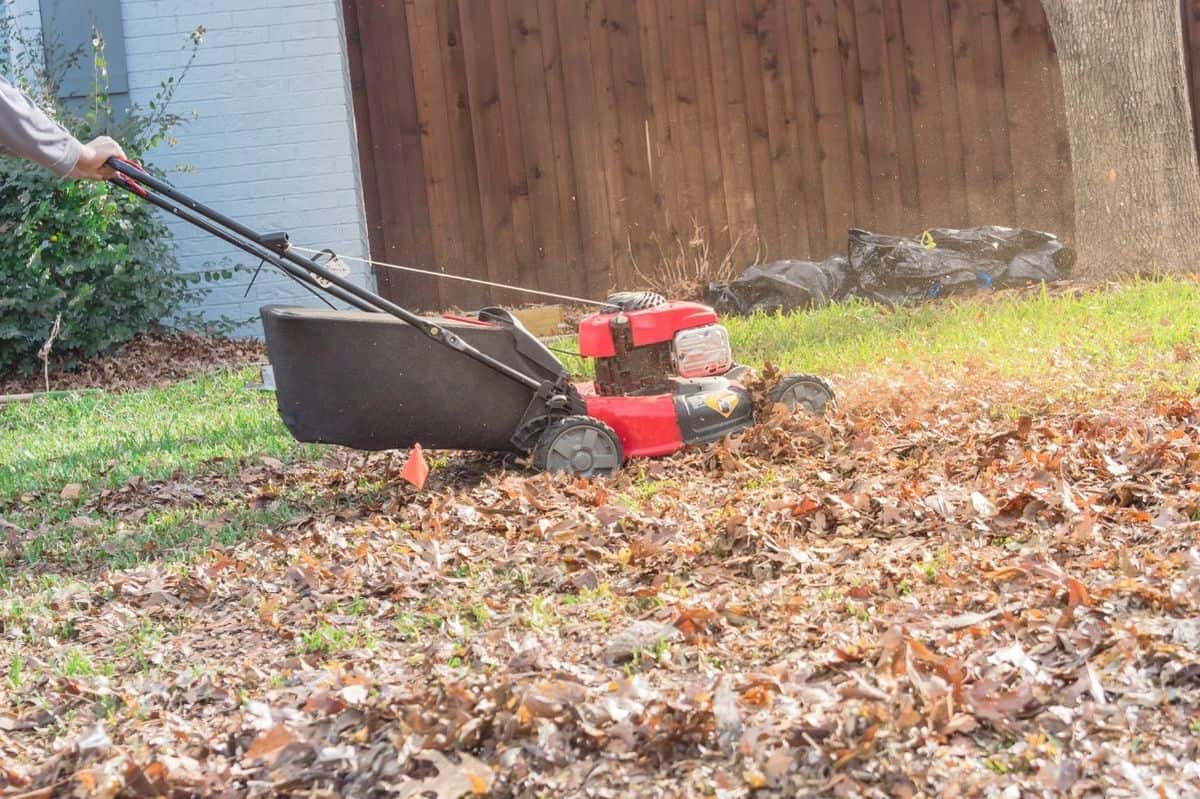

Shredded Leaves
If you have a lot of deciduous trees on your property (or your neighbors do), then chopped leaves can be a great—and most importantly, free—mulch option. Over time, the leaves break down into organic compost that you can then mix right into the top of your soil.
We do recommend putting the leaves through a leaf vacuum, running over them with your lawnmower fitted with a mulch bag, or placing the leaves in a large plastic trash can and running a weed trimmer inside to chop them up. You never want to place full-size leaves on your plants. Most types of leaves will compress into a mat that water can’t get through, cause mold growth, and take ages to break down. Shredded leaves are the way to go!
Growfully Protip
Do your neighbors drop off a bunch of those yard waste bags full of leaves on the curb each fall? Ask around and collect as many of those as you can! Use what you can to put your garden to bed for winter, and stash the rest in a garage or shed until spring.
Pine Needles (AKA: pine straw)
If you live in an area with a lot of evergreen trees, grabbing pine needles (also known as pine straw) can be easy (and free in many cases). Pine needles are great because they are one of the longest-lasting organic mulches out there and they don’t compact easily—staying nice and fluffy for an entire growing season or longer!
It’s a common myth that pine needles (and other evergreen-based mulches like pine shavings) will make your soil incredibly acidic. While evergreen-based mulches do add a small amount of acidity to the soil—more if they are greener—the science shows that the change is minimal and happens very gradually—we’re talking a tenth of a pH point over the course of year.
If you have very acidic soil, you might want to avoid any small changes in the wrong direction of your soil pH, but for the vasty majority of gardeners with neutral or alkaline soil, you won’t even notice the change in pH if you used dried pine needles.

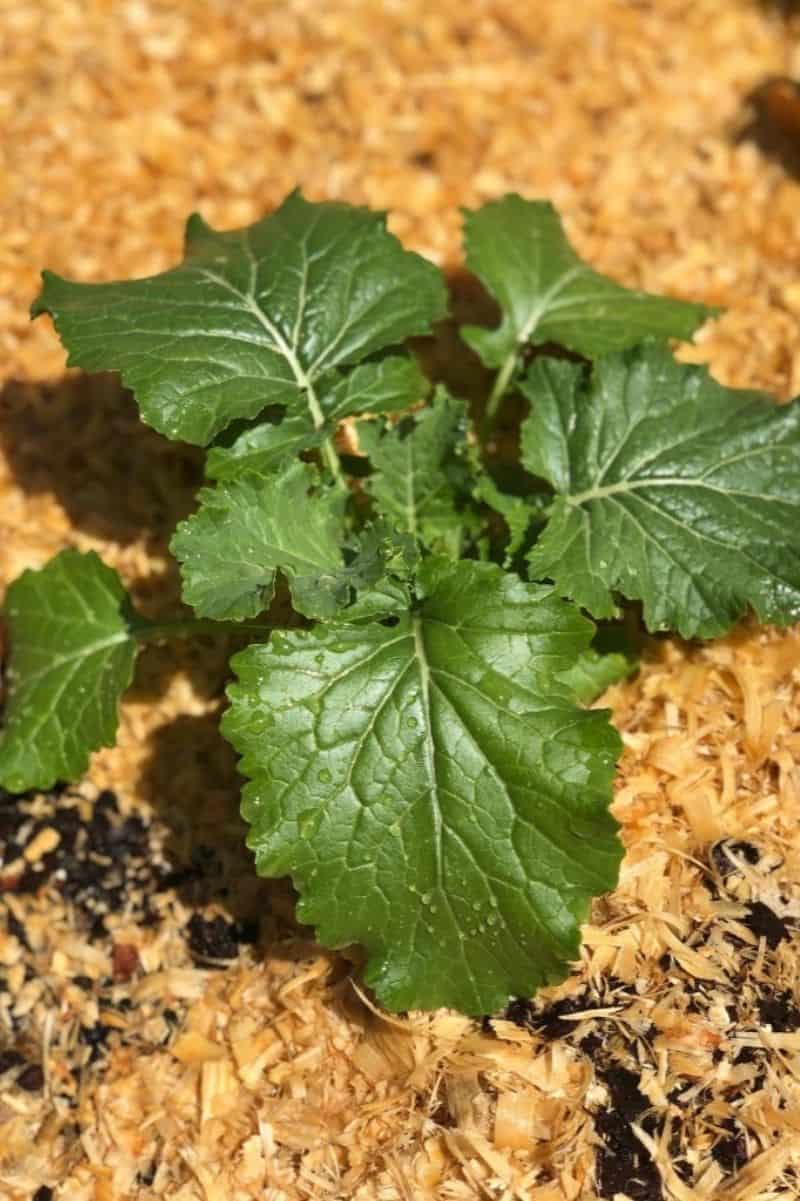
Pine Shavings
Pine shavings are super affordable (a few bucks a bale at our farm supply store!), have no weed seeds, and are one of the nicest-looking organic mulches around. We’ve been using pine shavings as mulch for years—they are a favorite for us when we run out of mulched leaves!
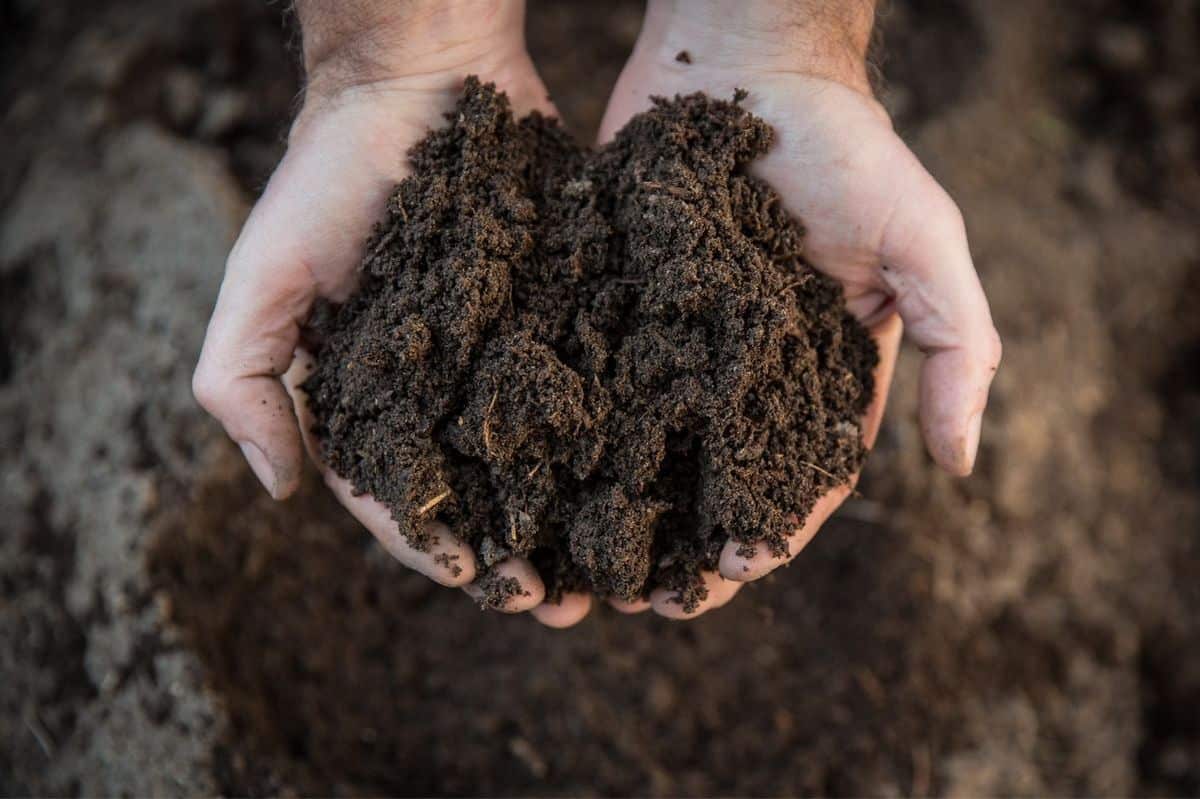
Compost
Depending on your climate, you can use compost as both a fertilizer and a mulch. In our midwestern summers, compost dries out and gets pretty hot at the peak of summer, so we don’t use it as mulch. We save our compost for soil amending and side dressing instead.
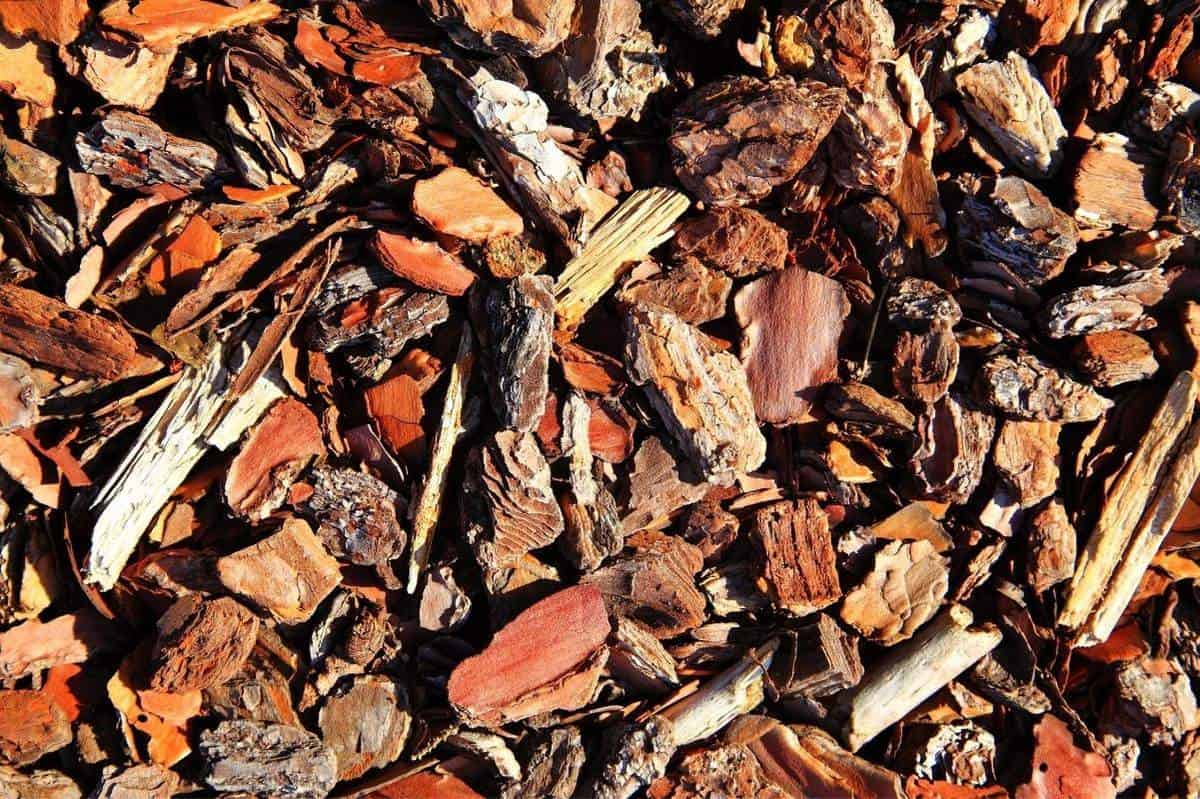
Wood chips or bark mulches
Wood chips or bark nuggets can be a great option for long-lasting mulches (we particularly like wood chips or bark nuggets around perennials)—especially if you can verify the source. Because many folks use the mulches for landscaping purposes, too, many of the wood chips, pine bark, bark nuggets, or bark mulches can suffer from the same contamination issues as hardwood mulch.
A sure way to make sure you’re getting good-for-your-garden wood chips? Connect with your local arborist! Either through a service like Chip Drop or by contacting your local company—many arborists are more than happy to drop off wood chips for gardeners (especially if it means that don’t have to take a trip out of their way to drop off elsewhere).
Growfully Protip
All organic mulches “tie up” nitrogen while they break down—especially in the early parts of the decomposition process. While this typically isn’t a huge problem with cured or dried organic mulches (like pine shavings, dried leaves, or dried pine straw), it can definitely be a problem with green wood chips from a local arborist or your own wood chipper. Make sure you “age” your chips at least 6 months before using on or near vegetable plants.

Straw mulch
Straw is a classic mulch for the garden because it’s affordable, readily available, and does a great job of keeping weeds down and moisture consistent.
The big (BIG!) caveat here: it seems like every year it gets more and more difficult to find weed-free straw. Straw mulch is supposed to be weed-free (unlike hay which is made of cut dried grass and often contains weed seeds), but I’ve tried straw from dozens of different locations and all seem to add weed seeds right back to my garden. This is why we started using pine shavings instead of straw about five years ago.
Growfully Protip
If you can make friends with your local farmers, you might be able to get your hands on some truly weed-free oat straw or wheat straw—and you’re in business!
 Grass clippings
Grass clippings
We love a good free mulch, and grass clippings are a free mulch most folks produce each week in their yard! If you want to use grass clippings, here are a few things to keep in mind:
- Don’t use grass clippings from any lawn that has been treated with any synthetic fertilizers, herbicides, dyes, or other lawn treatments that you wouldn’t want in your organic veggie garden.
- If your grass got a little long and went to seed (or if you have any weeds in your lawn that did—hello, dandelions!) don’t use that in your garden.
- Let the grass clippings “age” for a day or so in the sunshine to dry out. Fresh grass clippings can mat and be hard to spread.
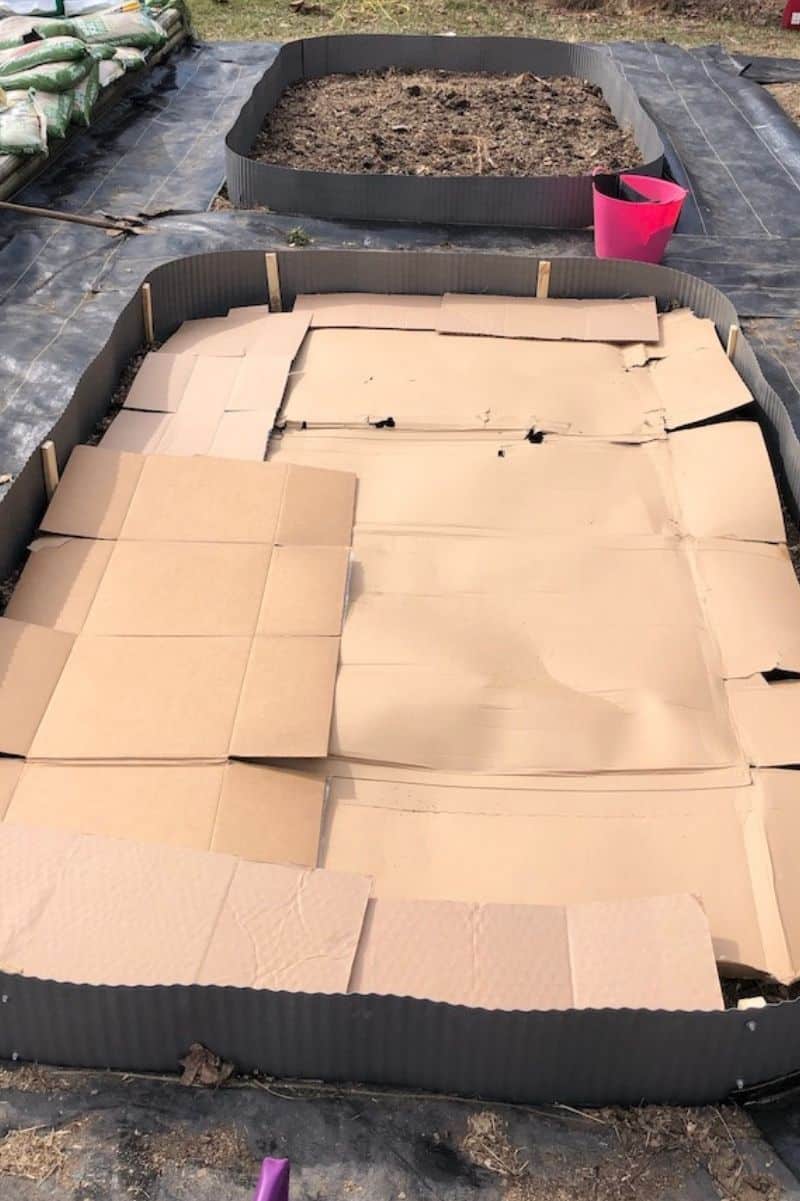
Newspaper or cardboard
We’d be remiss if we didn’t talk about newspaper and cardboard here. While newspaper and cardboard aren’t typically used as the final layer of mulch in a garden, many folks have great success placing them under other types of mulch (like straw or pine shavings) to help prevent weed growth.
Whenever we are going to start a new bed in the Growfully gardens, we always save our cardboard boxes for the months leading up to it, and use the cardboard as the base of the new bed. It’s a great way to smother weeds for an entire season—and then as the cardboard breaks down, it adds nutrients to the soil.
If you are going to use newspaper or cardboard as a weed barrier, here are some tips:
- Don’t use any coated cardboard or paper. This means avoiding the shiny inserts in the newspaper or any boxes that have printing or coating on the outside.
- Remove any tape or labels. Plastic tape, invoice holders, or shipping labels won’t break down in your soil. Remove those before putting down your barrier.
- If working with newspaper, you want a thick layer. Six sheets or more down is what you need (this is the reason most folks prefer cardboard now, we have a lot more cardboard boxes coming to our house than newspapers nowadays). If it’s windy out, you might want to wet your newspaper before placing it down to keep it under control.
There are a number of ways to use cardboard or newspaper weed barriers. You can use cardboard or newspaper at the bottom of a raised bed as a weed barrier, and then put soil on top. You can use cardboard or newspaper on the top of your soil, cover it with another mulch (to help keep it down), and then cut holes where you want to plant. Some people only use cardboard or newspaper in their garden aisles. Experiment to figure out how this works best for you!
Growfully Protip
Cardboard and newspaper are great temporary alternatives to landscape fabric or plastic mulch. While landscape fabric can be especially effective at suppressing weeds, it contains petroleum and other chemicals that you probably don’t want leeching into organic garden soil. Plastic mulch can help warm your soil, but it doesn’t allow for moisture or air circulation. If you choose to use weed fabric or plastic mulch as your weed barrier, we recommend using it only for non-edible gardening or between garden beds. Stick with the cardboard or newspaper for your weed barrier where you are growing food.
Living mulch or green mulch
If you’re looking for a more advanced mulching method, living mulch is something you should look into. Living mulch can mean a couple of different things:
- The act of growing a specific crop around your veggie plants for the sole purpose of mulch—many folks use cover crops such as annual clovers or thyme (both of which can handle some foot traffic if you want to use them in your aisles).
- The act of using companion plants that you can underplant below taller plants. A good example of this is growing squash plants around and under corn plants. The squash plants grow quickly, and their thick, low-growing leaves help shade the roots of the corn plants.
A note about rubber mulch
We don’t recommend using rubber mulch in your vegetable garden. While it may be made from recycled materials, we don’t love what it leeches into the soil. And while it might sound nice that it doesn’t break down and you never have to add more mulch—we want our mulches to break down! When organic mulches break down in the garden, they are replenishing nutrients and creating healthy soil.

Mulching at the End of the Garden Season
In the fall, when everything has been harvested that we can get, every bed gets a nice thick layer of shredded leaves for the winter. This keeps the soil structure intact, prevents erosion, and warms the soil up a bit in the spring when we’re ready to start planting greens and carrots again. We use shredded leaves because we’re processing them anyway around that time of year with our wooded property, but any good organic mulch will do the trick.
Come springtime, we just cover the leaves with compost, and we plant right in the compost. Our garden is no-till, so we don’t worry about mixing in the leaves or compost, we just keep layering and layering with great success.
Disadvantages of Mulching
Overall, mulching is a huge win for the garden, but there are a few hiccups you should keep in mind:
- In some areas, mulching can increase pest pressure. This is especially true if you are dealing with slugs. Many pests love to hide out in the shelter of the mulch. Make sure to keep your mulch a few inches away from the stem of your plants to avoid making a pest habitat right next to your plants.
- Pests and diseases can overwinter in mulch. If you’ve had an area of your garden that had a disease or a pest infestation, make sure to remove all the mulch and destroy it (burn it, if you can).
- Slow the warming or drying of spring soils. If you live in a region with particularly wet or cold spring weather, you might want to pull back your mulch to allow the sun and wind to warm and dry out the soil before planting. Then replace the soil once your plants are nestled in for the season.



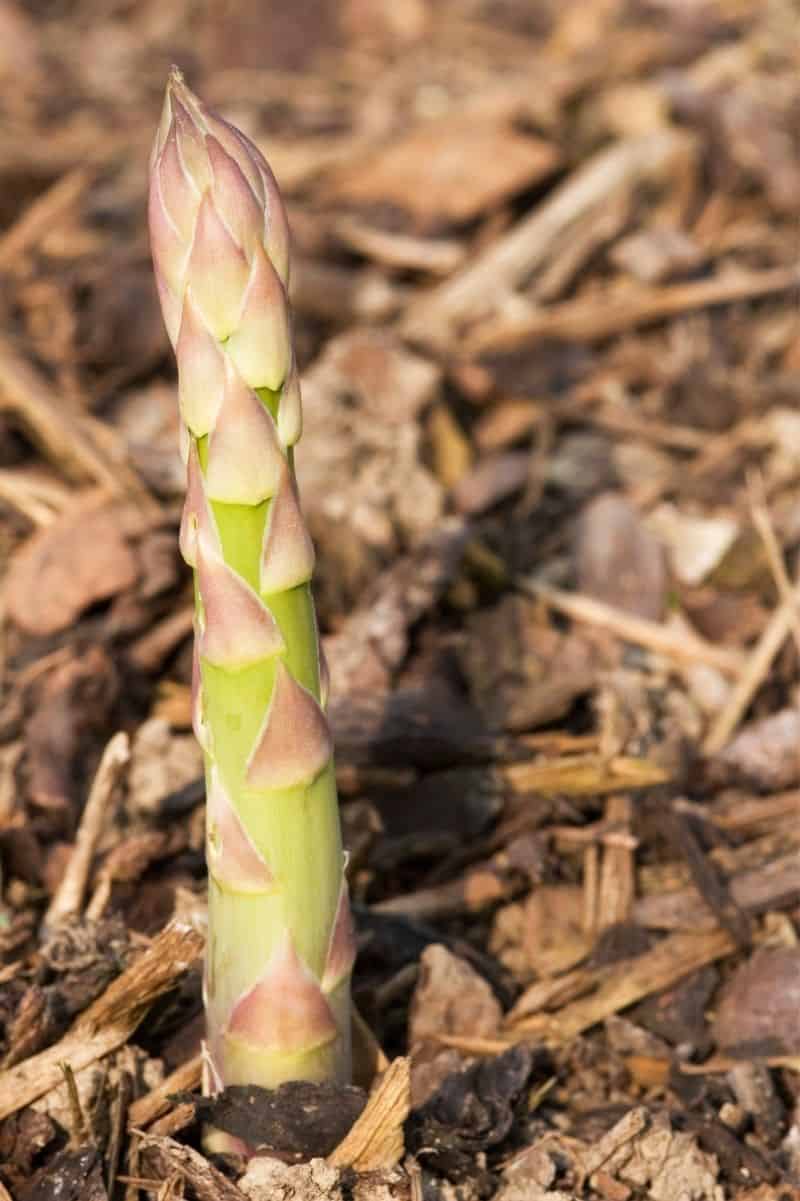
 Grass clippings
Grass clippings






Thanks for helping me understand that there are various types of mulching options to choose from with various ranges of prices as well. I hope that I can make the right decision regarding what would be best for my back yard, since we would actually be needing the area to be done before next month. It’s in preparation for the party we will have there for my husband’s birthday.
This is so helpful! Thank you!